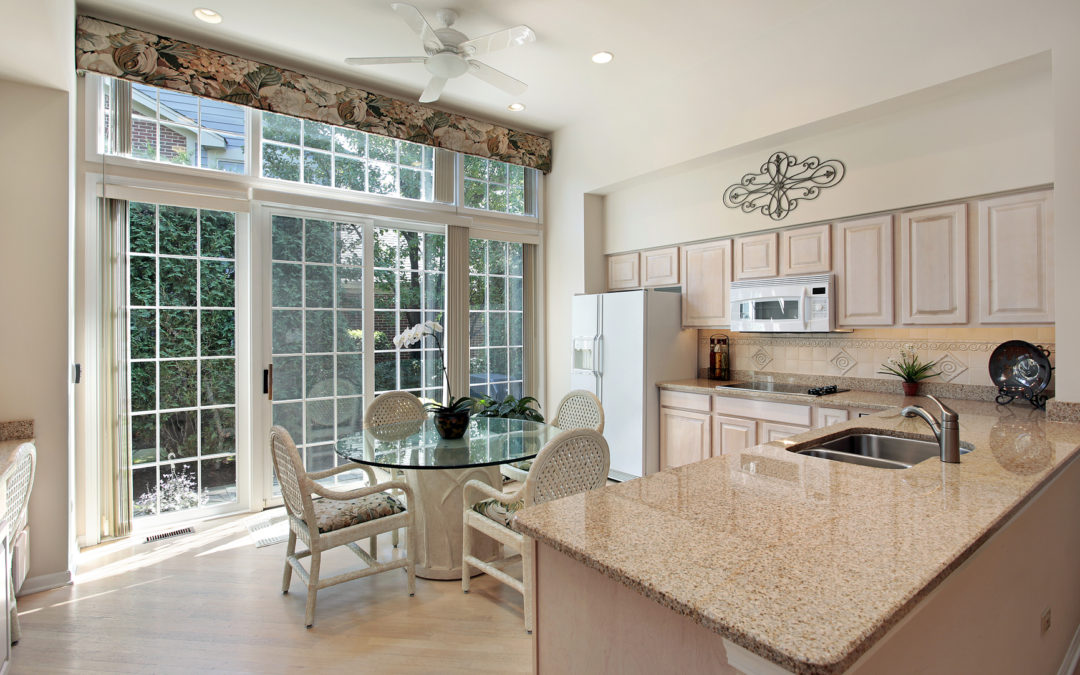Installing a sliding patio door can breathe air and light into a living space while adding a modern touch to any home. There’s more to it, however, than just choosing a sliding patio door; selecting the ideal materials and understanding how they may affect the door’s performance are important first steps. There are other considerations, too, such as location and design.
1) Understanding How Different Materials Affect Frame Size
Regardless of which manufacturer you choose, Sliding patio doors are available in any number of styles and materials. Each option has its own benefits and drawbacks in terms of energy efficiency, price and appearance. Aluminum, for example, is much thinner and might fit into a space easier than vinyl, which is usually much thicker. Whereas fiberglass provides you with a much more energy efficient option.
It helps to compare the options with the help of both the manufacturer and the contractor. Their valuable advice can guide you to the ideal sliding-door design for your home.
2) Understanding the Different Types of Patio Doors
The most common design consists of two doors, glass and a screen. This style is simple yet practical, and it can complement just about any interior or exterior design scheme. But if you really want to break the mold and find an option that’s a bit more creative, there are plenty of other choices.
For instance, a French Sliding Door incorporates four different glass panels with two center-doors sliding away from and toward each other. These often create the appearance of a typical hinged door, but they offer the advantage of a wider doorway. This is often a great option for homeowners looking for a patio door that opens as wide as possible.
Another great option is the telescopic patio door. These can open even wider than the French sliders—almost covering an entire wall space!
Telescopic patio doors can really blend an outdoor and indoor area in a very natural way. The more doors involved in the design, the larger the track system that guides the doors will need to be. While French sliders will commonly have track systems of approximately 5 to 6 inches, it’s not uncommon to see telescopic doors with tracks reaching 1 foot in length or greater.
3) Choosing the Best Place in the House for the Door
If a patio is already built, it becomes a pretty easy answer as to where the sliding doors should go. Many times, however, there’s some freedom of choice when it comes to door location—especially if a larger design, like a telescopic door, will be installed.
Sometimes, this requires nothing more than making sure the furniture and other basic aspects of the home don’t become obstacles. It’s always smart, though, to consult a professional contractor. He or she can help identify how structural integrity and other factors contribute to the ideal location for the sliding door.
4) Choosing the Right Glass
Sliding patio doors can increase energy-efficiency within the home. Since their wide openings enhance ventilation, they can reduce air-conditioner use.
If you’re interested in optimal structural longevity and lower power bills, the type of glass should be chosen carefully. Low E, obscure and Energy Star-rated glass will allow light to enter while blocking ultraviolet rays that can heat a home during the day. If the door faces an area exposed to a lot of sunlight, hanging curtains can also enhance the energy-efficiency of the doors.
Since this area will likely experience heavy traffic, it’s important to invest in tempered glass to decrease the likelihood of serious injuries.
5) Choosing the Right Materials for Your Home
Sliding patio doors are essentially giant windows, and just like windows, it’s important to understand how the different materials can influence functionality. Standard materials like wood may look beautiful and reduce energy bills, but they often require more involved maintenance. At the change of every season, the caulking and stripping will need to be inspected thoroughly. The door will also need to be regularly cleaned to deter cracking and rotting.
Vinyl is an affordable option, and its molecular structure makes it a great insulator. Many homeowners, however, find the limited range of color options to be a deterrent, as well as the fact that vinyl cannot be repaired if any damage is sustained.
Options like fiberglass offer excellent structural integrity while still being incredibly energy efficient. They’re also available in a variety of different finishes that can even help keep temperatures more manageable inside. They can also be repaired relatively easily.
Sliding patio doors are great additions to just about any home. They can add a touch of modern aesthetic while creating a comfortable and visually striking living space. By making the right choices and examining all the available options, homeowners can expect to have a patio door that will last long and look fantastic.


